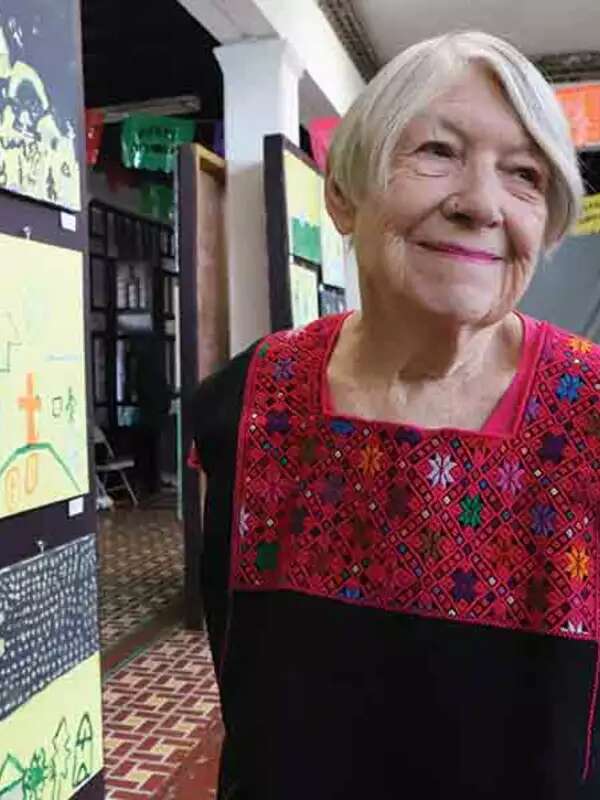
When Mary Barthwell came to Barnard in 1964, the campus stretched about a block and had few buildings. She lived in Reid Hall, the then-newest residential dormitory, with her roommate and childhood friend, Jean Gaillard Spaulding ’68.
“I knew I wanted to be a writer,” says Barthwell Evans. “But when I placed out of my first-year English class, my professor told me to find something to write about. This suggestion led me to read the work of Kwame Nkrumah [who led Ghana to independence from colonial rule and become the country’s first African-born prime minister] and to my growing interest in Africa.”
This interest in African decolonization became the impetus for her participation in the Students’ Afro-American Society (SAS), where she served as one of the only female activists in the organization. When protests broke out on Columbia’s campus in 1968, Barthwell, along with other students, occupied Columbia’s Hamilton Hall to oppose the university’s decision to build a private gym in Harlem’s public Morningside Park. The demonstrations came at a time when African American activism across the United States was charged by an intense struggle for civil rights and social justice.
So what did it mean to be an African American student at Barnard at the height of civil unrest? Barthwell Evans reflects on that time and on how she continues to advocate for diversity in her work as the CEO of the Barthwell Group — a management consulting firm based in Detroit — with the firm’s COO, her son, Walter K. Evans.
What brought you to Barnard in 1964?
I arrived at Barnard without ever seeing the campus before. I was joining the College after being the first African American to integrate the Cranbrook Kingswood School — a prestigious secondary school in Bloomfield Hills, Michigan — and graduating at the top of my class. Even when I was the student council president at Cranbrook, I was the only African American. This was isolating and very lonely, but when I decided to attend Barnard, I knew that I had my dear friend, Jean, right by my side.
There were also only six African American students that I knew of in my class. Across the street at Columbia, there were about 10 or 12 African American male students. Eventually, we all met.
How did you find your place at the College?
After discovering a course in international studies on campus, I came across [the work of] African activists. This is when I found my passion at Barnard. I became very interested in Africa because I really didn’t know anything about it. I was fascinated to learn how the former colonies were struggling or fighting for their independence, [and] I started taking every course I could find on Africa, at Barnard or Columbia.
I abandoned my original plan to become a novelist and [studied] the intersections between bipartisanship and democracy. There was an assumption that if a country had multiple political parties or a two-party system, it was going to be more democratic. I rejected this assumption. As an African American living in a two-party system, I didn’t necessarily feel that there was democracy for me. This led me to pursue a major in government [now political science] at the College.
What prompted you to participate in the movements that eventually led to the Columbia protests?
It’s important to understand the context of the era [of the 1960s]. Students were protesting the Vietnam War across the United States. People were protesting the draft. There were many African American leaders challenging the myth that the country provided democracy for African Americans. During the four years I was at Barnard, and before the 1968 protests, I was surrounded by questions of what it meant to belong as an African American in this country. For instance, what were we going to do to make sure that people actually had freedom and equality?
What was your pre-affirmative action college experience like?
When I noticed that there were only six other African American students in my class, each of whom looked similar to myself — typically light skinned, middle or upper middle class, from the Midwest or Northeast — I went to the director of admissions, Helen McCann ’40, to ask why there weren’t any Black students from the South. She responded by saying that Barnard would love to welcome African American students from the South but had no idea how to locate or attract them.
This led me to organize a collaborative student-run recruitment and travel to cities like Jackson, Mississippi, Atlanta, Georgia, and Birmingham, Alabama, where I met students from predominantly Black high schools. I told them that they should consider coming to Barnard, Columbia, and other schools in the Ivy League. These students were often told by the College’s administrators that it would take them five or six years to complete their degrees. I countered the admissions office by suggesting that these students could take preparatory classes over the summer or write research papers for credit. McCann agreed, and as a result, more African American students began to come to Barnard.
You’ve long been an advocate for diversity, especially in your work leading the Barthwell Group. From your perspective, what does it mean for you to see affirmative action come to an end?
The SCOTUS decision will have a chilling effect on progressive actions necessary to ensure an equitable opportunity for the best higher education for all. We are seeing de jure and de facto dismantling of institutions designed to promote equal higher education opportunities.
There have been numerous analyses documenting the correlation between diversity and greater innovation, productivity, creativity, and enhanced intellectual achievements. I have experienced being the only or one of very few African Americans in educational environments pre-affirmative action. Without affirmative action, we will undoubtedly see a decrease in underrepresented minorities in higher education institutions. This may result in more “groupthink” and insular education.
Photograph by Tom Stoelker



